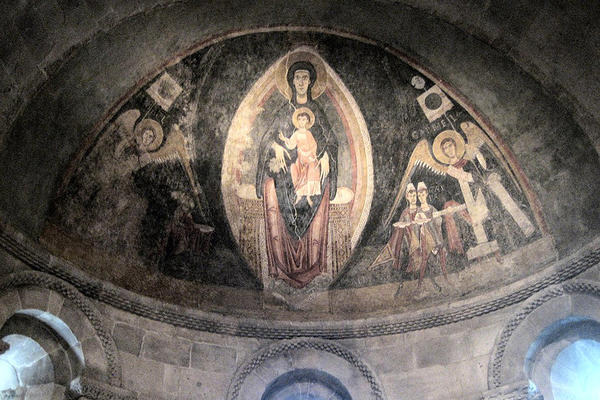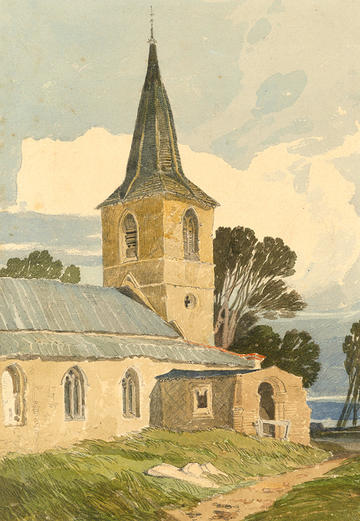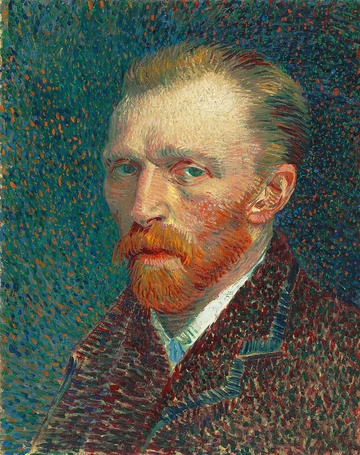Course of three talks over three weeks on Tuesdays in January-February 2024
The in-person talks take place in the Headley Lecture Theatre and online via Zoom
Booking required
With Juliet Heslewood, art historian and author
This course of three talks led by Juliet Heslewood will explore three different and exciting periods in Western Art history when the use of colours in art and artistic practice changed significantly.

Romanesque fresco by the Master of Pedret depicting 'The Virgin and Child in Majesty and the Adoration of the Maji', c 1100

Cranworth Church, Norfolk, by John Sell Cotman, 1809-10, in watercolour © Ashmolean

Vincent van Gogh. Self portrait, 1887 © The Art Institute of Chicago
Talk 1, Tue 30 Jan 2024 - Earth Colours of the Romanesque
In the early medieval period, identifiable 'artists' hardly existed but anonymous 'image-makers' worked in paint that was derived from natural resources. Manuscripts, wall paintings and even embroideries all tended to reveal the same colours that, though
limited, were well able to enhance the legibility of their varied works.
Talk 2, Tue 6 Feb 2024 - Watercolouring England
During the early years of the 19th century, artists were reluctant to travel to war-torn Europe. Many British artists turned to their own countryside in order to record its changeable nature in watercolour - a difficult but portable medium. Their practice
saw the development of a specific school of painting that encouraged the careers of both Turner and Constable.
Talk 3, Tue 13 Feb 2024 - Van Gogh: The Colour of Feeling
Living in the Netherlands where he was hoping to become a preacher, Vincent van Gogh was only aware of the impact of Impressionism in Paris through journals and news from his brother. He took up painting as a recreation and his early work was characterised
by very dark colours as he examined the poverty of local peasants. Once in Paris himself, everything changed – especially the colours of his palette. In his short career he mastered the power of vibrant colour combinations, for which he is so well
known.
BOOKING
The course sessions will take place in-person in the Headley Lecture Theatre and online via Zoom.
Booking is essential and tickets are £24 for both the in-person and online course.
BOOK IN-PERSON TICKETS BOOK ONLINE TICKETS
If you have any questions before the event, please email jude.barrett@ashmus.ox.ac.uk.